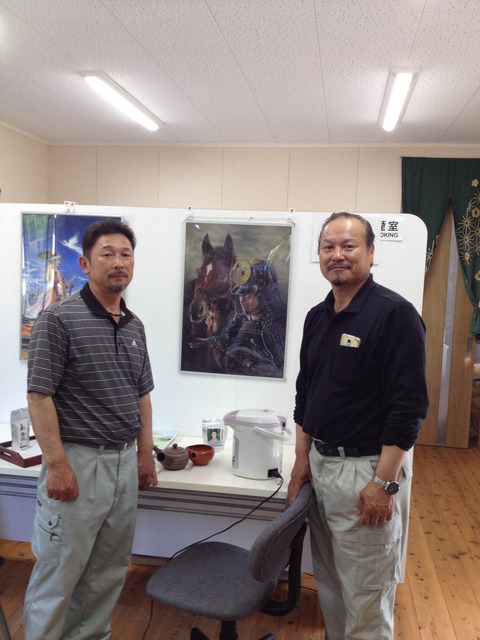Mr. Mori of 9th degree tea master is owning finishing tea company, Kagoshima Seicha and tea house, Birouen near Kagoshima Chuo Station.
His selection 2015 is;
Organic Kagoshima Sencha 1st Flush.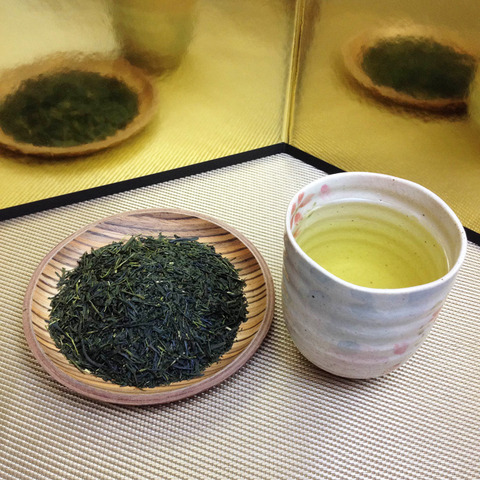
Organic Kagoshima Fukamushi cha 1st Flush.
Fukamushi means deep steamed.
Actually they are steamed longer time than deep (higher temperature) steamed.
The benefit is that tea color gets green by powdered leaf and taste sweeter than short time steamed if same leaf.
However, the leaf below look so great that you see deep green needle shape.
It looks like the leaf is too good and he didn't want to break the leaf shape.
It is still Fukamushi but really close to standard sencha this year.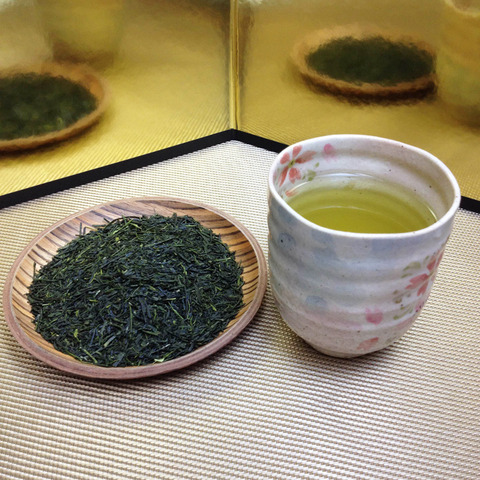
Organic Kagoshima Sencha 2nd Flush.
Kagoshima locates far south in Japan.
The eariest harvest of 2nd flush in Japan. This is teh latest arrival.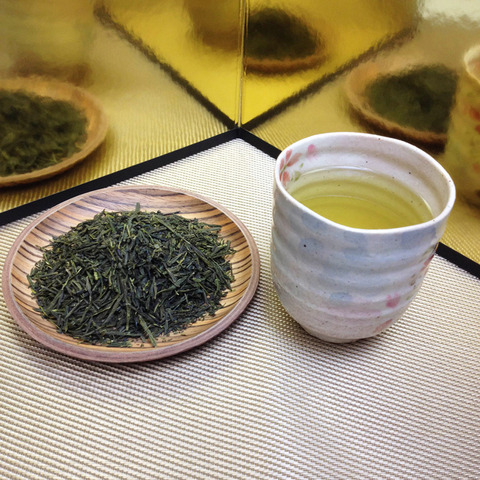
As seasonal products, the followings are always available.
Organic Sencha Autamnal.
Organic Genmaicha
Organic Hojicha
Organic Kukicha
To be continued.
If you have any question, please contact to
www.jp-greentea .co.jp/english
Thank you very much!
カテゴリ: Kagoshima
2015 Japan Green Tea, New Tea Offer 1
I traveled many tea regions in Japan to choose the 2015 tea.
I spent more time for organic gadens in Japan this year so that it was physically very tough trip this year since my choice of organic gardens are mostly located in deep inside of mountains.
But they are real deal: genuine tea growers rather than just "I keep JAS certificate rule" gardens.
Also, organic teas are grown slower than conventional tea trees so that the harvest time is later and packing to be ready is slower since the gardens are relatively smaller sized.
Anyway, 2015 selection is ready and let me introduce them.
1st one is Sakamoto Brothers; Organic Gyokuro. Kagoshima.
Tea has rich Theanine so that it look very shiny.
I believe most of tea people won't know it is organic until they are told.
1st time to launch this tea to the world.
2nd is Mr. Katsume's Sencha Asatsuyu. Kagoshima
Asatsuyu is called natural Gyokuro by its sweetness, however, the cultivar is very weak so that this is mostly used for blend sencha since the production volume is quite low.
This is limited edition but we are happy to produce 100% Asattsuyu cultivar sencha this year.
Please use 70C to 80C degree and start pouring after 30 seconds.
3rd is Katsume's Sencha Saemidori. Kagoshima
Saemidori is made by crossing Yabukita and Asatsuyu.
The prince of cultivar.
Mr. Katsume is a tea master and competition winner.
This is the best 2015 in his 23 cultivars.
The next is,
Famous Harimaen in Uji, Kyoto.
Organic Gyokuro.
It's been an only organic gyokuro in Japan for a long time.
Organic Hojicha.
Hojicha is roasted green tea.
It looks wild as you see stems ans stalks.
But when you open the package, please smell it. Smoky leaf aroma is so rich and you'll see the artistical skill or roasting.
Organic matcha ceremonial Grade A (the highest among his matcha)
Organic matcha ceremonial grade B (the 2nd best)
To be continued....
If you have any question, please contact to
www.jp-greentea .co.jp/english
Thank you very much.
Tea Quest is not cozy trip Day 2. 9th Degree Tea Master

After visiting tencha factory and organic matcha garden, we stopped by green tea cafe in Kirishima.
It's called Nishicha Kirin Cafe.
We are served fresh new tea at here.
It contained rich theanine like a Gyokuro tea.
Then, we moved to Tea Industrial Estate in Kagoshima city.
Mr. Hiroyuki Mori is the president of Kagoshima Seicha.
He is the 3rd generation of the company which has been doing since 1885.
The facility he has is huge!
Color detectors, contamination remover, blender, microwave heater, roaster, nitrogen inserter...
Each machine is big!
Stem remover.
Firing units: microwave heater and roaster.
Separator to differenciate the leaf size.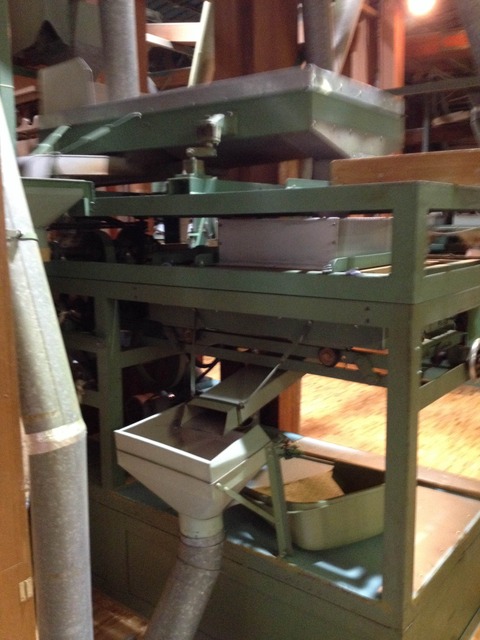
Nitrogen packing machine.
The above are all for Sencha green tea, it's mean the machines are originally invented for steamed green tea to keep the freshness.
Team Cha Yuan studied so hard to understand what function, and how many degree of tenperature, why they need..
Cha Yuan, France is very much professional about Chinese teas and Indian tas so that they can understand deeply for Japanese tea manufacturing by compare and contrast with other tea.
It is very important for us as tea seller who can distinguish the taste compornents that which taste is from what (such as from natural leaf or from fermentation, or from young leaf or from autamn leaf..)
All the rough teas are stored in minus 20 degrees.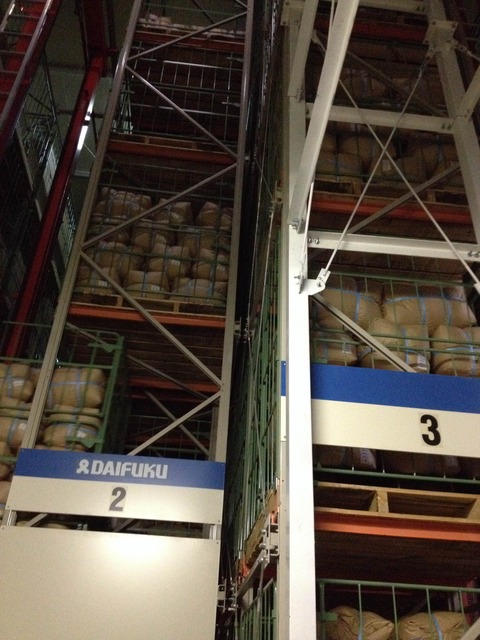
Mr. Imayoshi, a head purchaser of rough tea guided us the factory. Thank you!
Then we moved to Mr. Mori's tea cafe.
His mom is waiting for us and invioted us to her tea room.


She served us a fresh & just harvested tea to us, and the Team Cha Yuan seems fully understand about the taste difference by 1st flush and Autumnal sencha by its theanine content.
We moved to Saga at night to visit Arita, Imari in Nagasaki next morning.
No breakfast, no lunch and no dinner time..it was very hard day.
THÉ CHA YUAN INTERNATIONAL
Téléphone +33 4 78 42 46 14 25, place CARNOT
Fax +33 4 78 37 68 64 F-69002 LYON
FRANCE
SIRET 412 278 301 000 20 RCS LYON
TVA FR 40 412 278 301 NAF 4729Z
How they could make Organic Gyokuro - Sakamoto Brothers, Kagoshima
Today's agreculture, especially fruits, are totally improved the taste to be sweeter in decade. But it doesn't mean the plants are healthy as it used to be they were wild. Most of the difference is maybe because of improvement of cheamical fertilisers.
Then, Sakamoto brothers have tried making organic Gyokuro. It means there is no text book or instructors since no one really made it before, well, I mean convincing level.
So, everything what they have done is just everything what they tried so many kinds of experiments!!

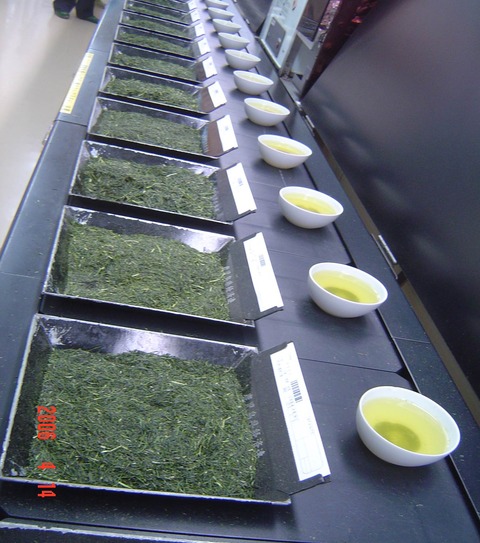
This is the dealer tea auction photos.
Tea dealers bid without tasting.
How?
They check leaf: color, shape, aroma, moisture-dry balance. Weight towards volume. (heavier than it looks proves much nutrition inside).
Then, they check tea cup color. What do you get to know from the cup color?
This is all about Sakamoto brothers tried and achieved perfect organic Gyokuro tea.
As a compost maker, they paid attention to Reactive Oxigen (ROS).
1st of all, they picked several green teas with different price.
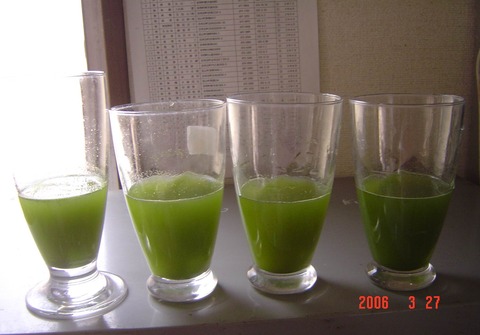
3 days later, they saw the result like below;

Right side remain its green, and it was the most expensive one.
Then, they made a special energy drink for the plants, mixed with Nitrogen, Magnesium, Calcium, and minerals. They made 4 different formula to see which is the best.

The result is obvious and they used this formula for their prototype nutrition.
Fortunately, they have had an own conventional tea farm so that they made an instant organic tea bushes at beginning. Then, gave the nutrition to both organic tea bush and conventional tea bush.
They plucked raw leaves from both organic and conventional tea trees.
Then steamed both.
The left is conventional and the right is organic.

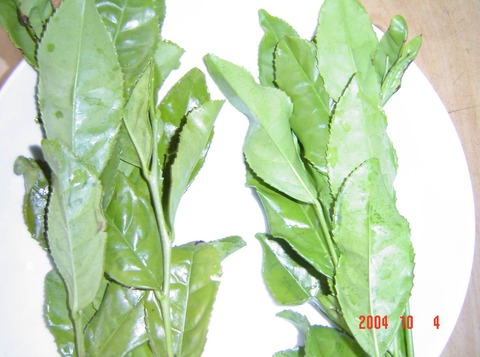


The result is obvious that their nutrition stopped ROS (reactive oxigen) to increase. It means cup color remain green. So, it means better leaf can remain the greenness and cheap leaf becomes red by ROS.
Now you seee how auction dealer buy/bid the tea. They see such redness through the infusded leaf and cup color.
Back to Sakamoto Bros. story.
Then, they moved to bigger experiment.
Fortunately, they have received the dead tea garden from very old aged neighbor who gave up tea farming by his high age.
Then, see the difference between left and right from the center.
The left lookd greener than the right.
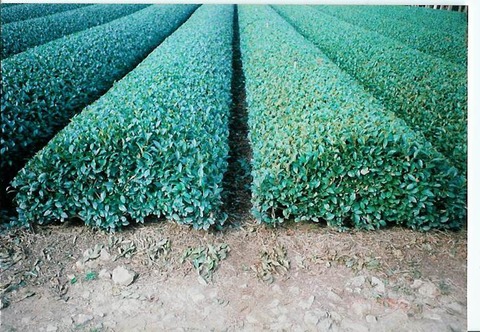
Also, look at the stem.
Organic one with his nutrition still remain green color while conventional tea with chemical fertiliser is already brown.

See the cell density by microscope!
Sorry the zooming size is different but left one is more densed and barely see white room inside of cell.
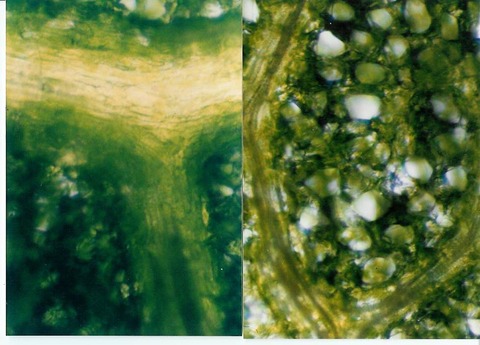
Organic leaf has densed cells and kept more clorofil, the substance is very important nutrition in green tea which cleans blood and rich antioxidant.
Yes, so the tea dealer check the cup color and see how cup color become red or its greenness is kept.
For example, they come to the auction hall in 7AM but bidding in 11AM. They see the trget teas and check how they changed in few hours. Loose leaf after infusion is also gives such answer. Cheap leaf becomes red.
After such experiment, Sakamoto brothers finally made their organic garden at the peak of his mountain.
Pasting enough compost on the soil.


The soil itself began fermented.
The temp. reached to 65C degrees and the seeds of weed or bad bacteria are all gone.
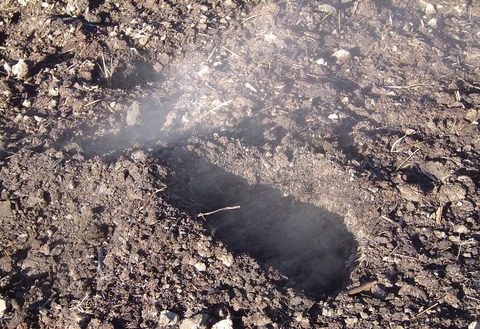

After 3 months, digging 2 meter dephs, and then mixing with their special organic compost.

Planting!

Grown very well!

1 year later!

Now.

Soil is still soft like a bed.

Therefore the leaf is green

When I told this story to my partners of tea farmers in everywhere in Japan, they are very skeptical about it and many said it works only a year and then, rain wash away such condition and the soil will be hard enough like the conventional gardens..
Well, it is not true.
The photo I introduced are year 2004 to 2009.
This is the video we shot in 2015.
They recognized that this "too healthy" soil and tea trees may be able to stand long day sun-shading without chemical fertilizer.
The answer was YES. It was a true Gyokuro. Maybe many won't find out it is organic by tasting.
I mean the weakness of organic teas are its taste of too light and weak.
So, I say they achieved to remarkable stage of organic tea industry.
Am I convincing?
If you are interested in his Kagoshima Gyokuro teas, please visit;
www.jp-greentea.co.jp
to contact to us.
Organic Yabukita, Saemidori, Okumidori cultivars' single Gyokuro are available.
Total availability is around 1 ton now.
Kagoshima Organic Green Tea 2015
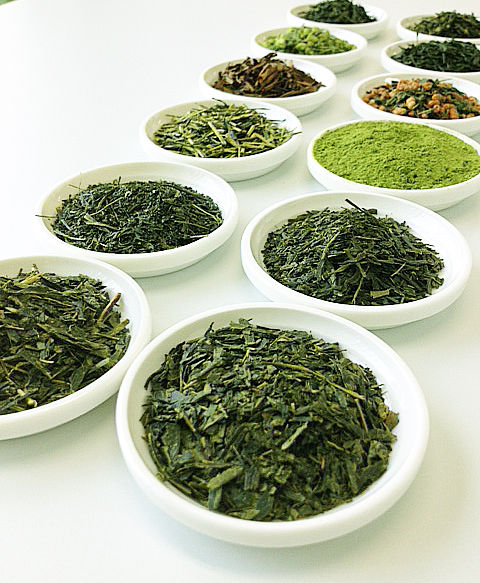
The big collaboration between Organic tea gardener, Mr. Kenji Tofuku and Kagoshima Seicha and Japan GreenTea.
Mr. Tofuku is one of the biggest name as organic tea farmer in Kirishima, Kagoshima in Japan.
We exhibited his organic teas; Sencha, Fukamushicha, Genmaicha, Hojicha, and Kukicha in last SIAL 2014 Paris, France.
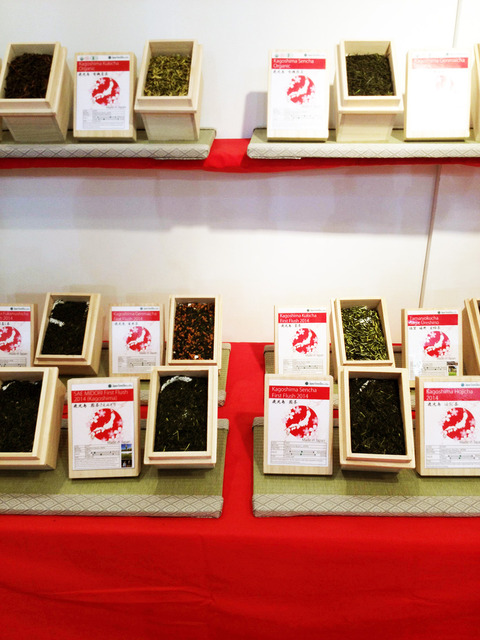

Every visitors who saw the fantastic needle shape of his 1st flush sencha said fantastic.
Kirishima is the hole of organic tea gardens in Kagoshima and the new tea is coming for sale on early June. (we sort and check pesticide residue)
Kirishima mountain

Organic sencha

Organic Genmaicha
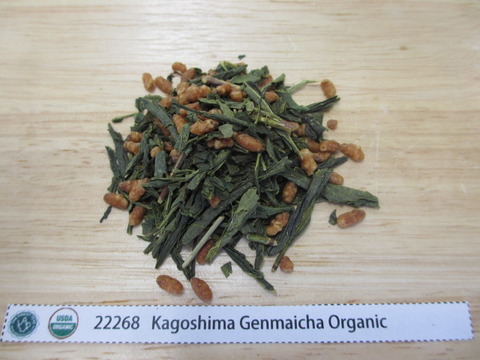
Organic Hojicha (mild roast)
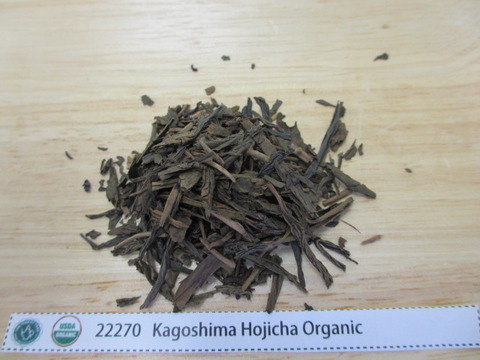
Organic Kukicha
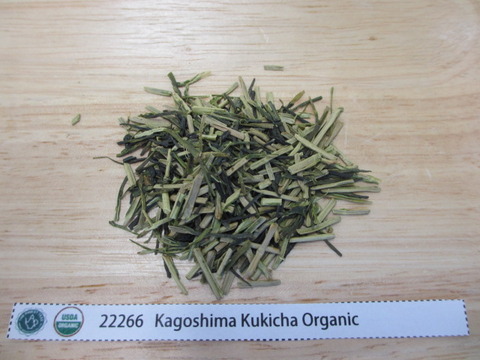
This is First Flush Fukamushicha.
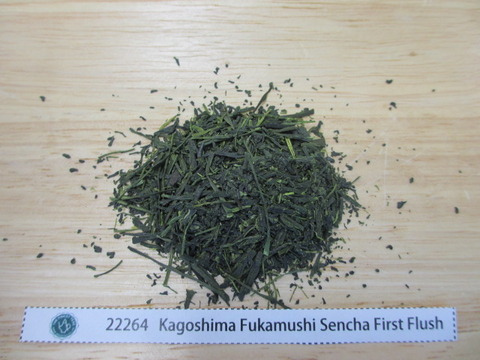
Our 2015 offer is almost ready.
If you are interested in these Kagoshima teas, please visit;
www.jp-greentea.co.jp
to contact to us.
Kagoshima Organic Green tea. Sencha process
His enthusiasm about tea is sperior and any of his tea is very tasty.
I've learned a lot from him and his man, Mr. Imayoshi.
The most valuable knowledge I've leaned from them is how to bid in tea dealer auction.
Most of Japanese tea gardens are very small sized farm who have been doing from 100 years ago. As you may know, Japanese green tea Sencha is used be made by hands rolling until being introduced the recent technology. It means, at the time, anybody can be a finished tea maker if they have a tea farm.
After the rolling machines (there are several for each process) are introduced, there are 3 types of tea gardens are developped.
1. Just a farm, doing agreculture only. No facility for even making rough tea. Maybe you can imagine that 1 family has a rough tea facility and use 9 of neighbors using their factory when harvest.
2. A farm with rough tea facility. Roughly more than 5 ha. farm usually have an own rough tea facility. Rough tea process for sencha is;
(1) Plucking
(2) Steaming to stop fermentation. (unlike black tea) (
Unlike Chinese green tea which is pan flied to stop fermentation, Japanese method is steaming. Why? It's because to remain/maintain vivid green color of leaf.
(3) 4 different types of rolling. Soju, Juunen, Cyuju, Seiju.
(4) Drying.
Then, most of rough teas are coming to tea dealer auctions in production city.
Shizuoka and Kagoshima are 2 biggest auctiions held every day around harvest season.
Then, so called Seicha companies (means finished tea) are coming for bidding.
They bid the tea and bring rough tea to their 2nd process facility to finish the tea when they win.
2nd stage of processing is from rough tea to finished tea.
Sorting the size, removing stalk, shaping the colors, heating or blending are done at this stage.
That is also requiring artisan skill. Please smell loose leaf when you buy a new tea and open the package. Nice leaf aroma means thier technic is high.
You can imagine blending requires not only the skill but also the big facility.
Backing to the beginning of this essay.
Mr. Imayoshi taught me how he makes pricing for tea.
Especially Kagoshima, the bidder can not taste the tea but they don't complain!!
How they figurfe out?
Maybe I'll write about it soon when I talk about how nutrition in soil reflect to the leaf.
So, this time, please check the video to just see the overall image of tea manufacturing.
If you are interested in, visit
www.jp-greentea.co.jp/english
and contact to me!
9th Degree Green Tea Master, Hiroyuki Mori

There are only less than 10 people have a 9th degree of Green Tea Master.
He is the one of them.
(10th degree is only 1 person exsit but Mr. Mori has to wait 2 more years to try. 10th grade is from age 45.)
He is a top blender in Kagoshima and actually my favorite retail sencha is his "Oku Kirishimacha" sencha.
He also have his own brand Satsumahomare.
He and his team goes to dealer auction every day and stock the tea to compose aroma-oriented tea, sweet taste oriented to apply his formula of his blend.
So, it means the raw ingredients (rough tea) and the supplying gardens are different each time of production. However, it is amazingly stable and tasty any time, any year we drink.
That's the blender's skill.
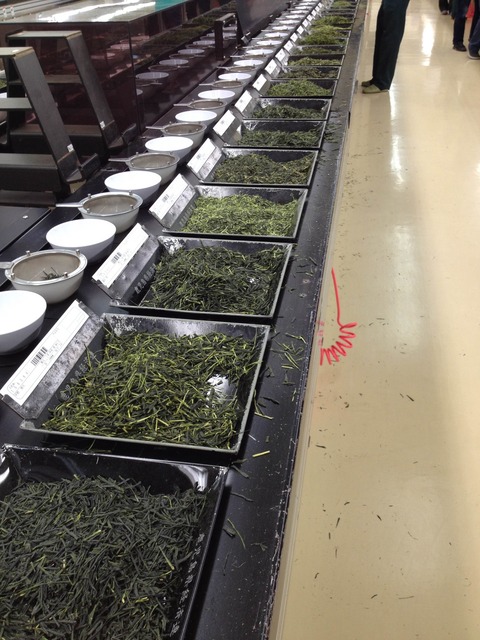
The facility is the biggest in Kagoshima and his 2nd processing factory: Sorting rough tea by the size and color, remove stalk, microwave dry for inside of leaf, drum dryer for outer side of leaf, metal detection, nitrogen packing, is fully controlled by Mr. Mori's operation.

So, I say there is a 2 types of blending.
Positive blend and negative blend.
Positive blend is; for example, if the big company want to sell tea products at 500 shops, there is no garden can supply such quantity as a single lot. And the taste must be the same at any shop.
So, the top blender make the recipe and remark the chracteristics of tea at development stage. Then, he makes exactly same tea everytime and every year.
Convincing?
And also, his Satsumahomare is blend of 5 tea regions in Kagoshima. We can enjoy 5 tastes in 1 tea to feel Kagoshima tea.
Oh, anyway, his mother has a fancy tea shop near the Kagoshima Chuo Station.
She let us into her tea room where she teach ceremonial tea class.
Thank you very much!
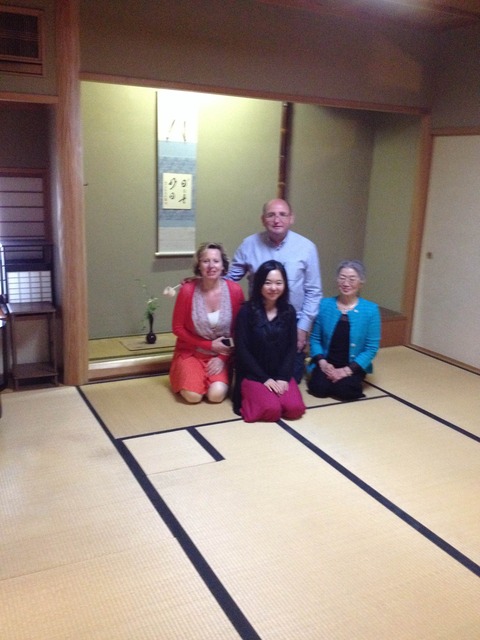
If you are interested in drinking his tea, please visit at
www.jp-greentea.co.jp/english
and contact to me!
The King of Green Tea Cultivar Preserver.

Mr. Senri Katsume (Left) and French Tea team, Chayuan International.
Do you know Japanese green tea has a cultivar?
As you know, any tea is made from Cameria Sinensis, no matter green tea, white tea, black tea or Woolong tea.
And then, cultivar is made for seeking better taste, better yielding rate or better anti-sickness in labo since Sencha steamed green tea is very sensitive in both growing and processing.
Mr. Hiroyuki Iriki in Mr. Katsume's team used to be in the City Government labo and crossing many cultivars and now he apply his knowledge for producing.
So far, the registered cultivars are about 80 kinds in Japan but Yabukita dominated.
Why Yabukita?
It is physically strong so that it lives in Kagoshima, South Japan to even Sendai on Notrthern Japan.
Taste is sweet and yielding ratio is high.
Then, especially buyers in food wholesaler pay a little more respect to Yabukita cultivar than the other, every garden start growing Yabukita.
However!!!!
There are many cultivars which is same or better cultivars in Japan, but just more difficult to grow.
I met Mr. Katsume on 2013.
He is young but his garden is making Sencha tea for over 100 years in Soo city in Kagoshima, Japan.
He showed me 23 of his cultivars include a native spicie (wild cameria sinensis).
Each of one is not a horticulture size, but a huge industrial farm for each cultivar.
My best 1 is Asatsuyu

This is sweet! Very rich Theanin.
2nd Best is Saemidori
He is a son of Yabukita x Asatsuyu
Well balanced but full body taste.
Due to the difficulty of production, it doesn't get a fame as it taste, I know it will since everybody who tasted becomes Saemidori Lovers.

Oh, the below photo is the native spicie.
Stem has more fiber and taste is not sweet as we drink these days but Mr. Katsume and Mr. Iriki made it for drinking grade by their expertise.
The 1st cultivar, "Z-1" in the labo is made from crossing these healthy tea tree's gene.
If you are interested in drinking many cultivars, visit
www.jp-greentea.co.jp/english
and contact to me!
Organic Gyokuro Garden in Kagoshima 2
Then, finally they tried Gyokuro tea in organic way.
They began making the organic garden from cutting trees to make farm.
They choose the top of the mountain so that any contamination from other farm is impossible.
Then, they put their compost tea on the soil to activate bacterial life to make the soil rich.
Also, they use newly developped branket for shading on tea tree.

It is 2 layers; silver on top and yellow under.
Silver can refrect sunshine so that inside of bushes of tea tree is cooler so that tea tree is not exhausted by high temperature.
Yellow one don't smell while famous black cover has a plastic smell and tea leaf absorb its smell often when shaded more than 7 days.
The taste is perfect.
I guess no one can distinguish which is organic or conventional.
They are definitely a top farming men unlike they look.
Very much scientific methods are used in their way from A to Z.
5 star incredible brothers. Now, let's check the garden!
If you are interested in drinking his tea, please visit at
www.jp-greentea.co.jp/english
and contact to me!
Organic Gyokuro Garden in Kagoshima 1

Making organic tea in Japan climate is very and very difficult. Our climate is very humid in spring and summer like Thailand but Autumn and Winter is very cold like Russia.
Then what happen?
Bug's life is very active and young tea leaf we drink is the best target.
No pesticide means less yielding rate compared to conventional garden, and the farm is limited.
However, they have to make a living.
Another issue is Herbicide (a weed killer). Since not using chemical fertilizer, tea tree can only get a nutrition from the soil.
Then, if weed around tree is strong and active, nutrition the tea tree can get is less and less.
Many says organic tea taste worse and lighter than conventional tea.
Yes, I agree it.
Conventional tea is cheaper, less production cost, and taste richer.
However, if tea is consumed for nutrition and health porpose, why not try organic tea??
We can even say the taste you drink organic is the taste that tea originally has it before modern technology is introduced in agreeculture.
Anyway, sencha (Japanese green tea is steamed and therefore it is called Sencha) is even difficult to make organically so that I see no one tried for Gyokuro in business basis so far.
Then, this year, this Sakamoto Brothers in Shibushi, Kagoshima tried and made it!
Gyokuro is sun shaded tea. Around the same time for harvesting sencha, covering sun shading branket on the tea tree for more than 20 days.
Why?
It makes tea sweeter to increase the substance called Theanin. It also stop increasing the bitter substance, called Catechin (or EGCG).
That's the main difference between Sencha and Gyokuro.
However, this method gives absolute stress to tea tree since tea leaf needs sun shine for boosting energy to live. Therefore, making Gyokuro in organic soil without chemical fertilizer in sun shaded garden is very difficult thing.
But!
This Sakamoto brothers did it and made it.
They are originaly an organic compost manufacturer who supply their JAS organic compost to neighbor farmers.
Look at this soil. No weed can grow in the soil by his recipe of compost tea.
Continued...

